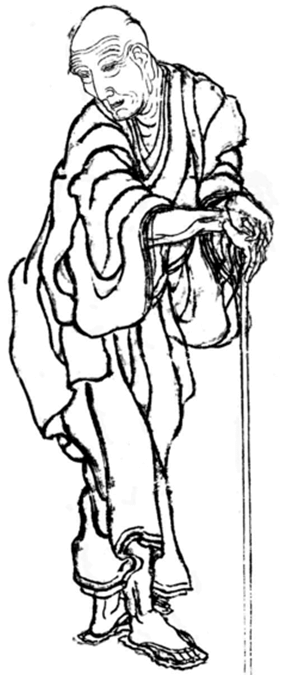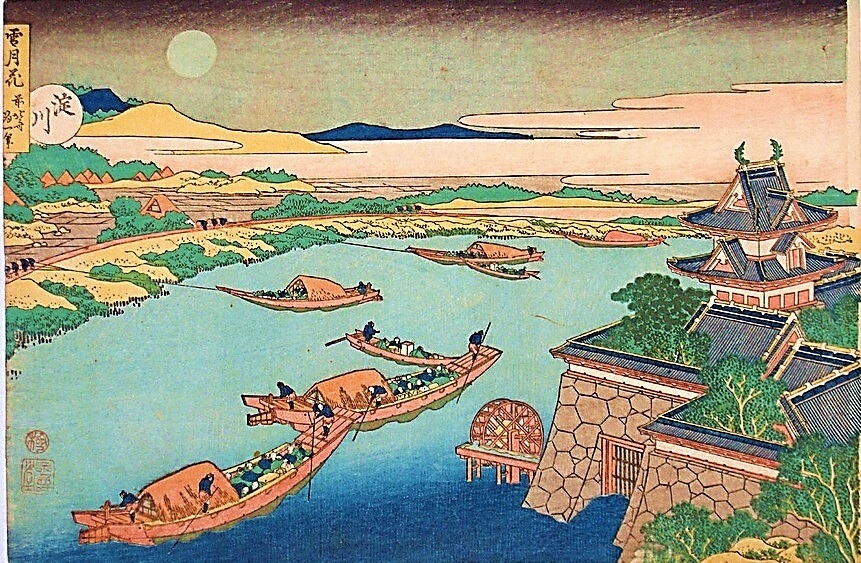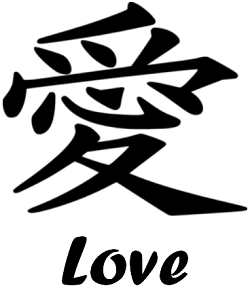Activity 1: Can You Find It?
Find the following in the artwork:
- Moon
- Mountains
- Boats
- Poles
- River Path
- Strolling People
- House Roofs
- Castle
- Water Wheel
- Japanese Writing
Activity 2: Narrate the Artwork
- After studying the artwork, narrate the scene shown aloud using your own words.
Activity 3: Complete Vocabulary Activities
- While studying the vocabulary words, point out any you see in the print.
- Define each of the vocabulary words in your own words.
Activity 4: Draw a Japanese Symbol
- The print includes Japanese writing on the upper left-hand corner.
- Japanese writing does not use the 'ABCs' used in the English language. The Japanese language has both characters that make up words and symbols that represent entire words.
- See below the Japanese symbol for 'love.' Sketch or color the symbol and label it, 'LOVE.'
Activity 5: Color the Artwork

- Click the crayon above, and complete page 7 of 'Art History Coloring Pages for Second Grade.'



